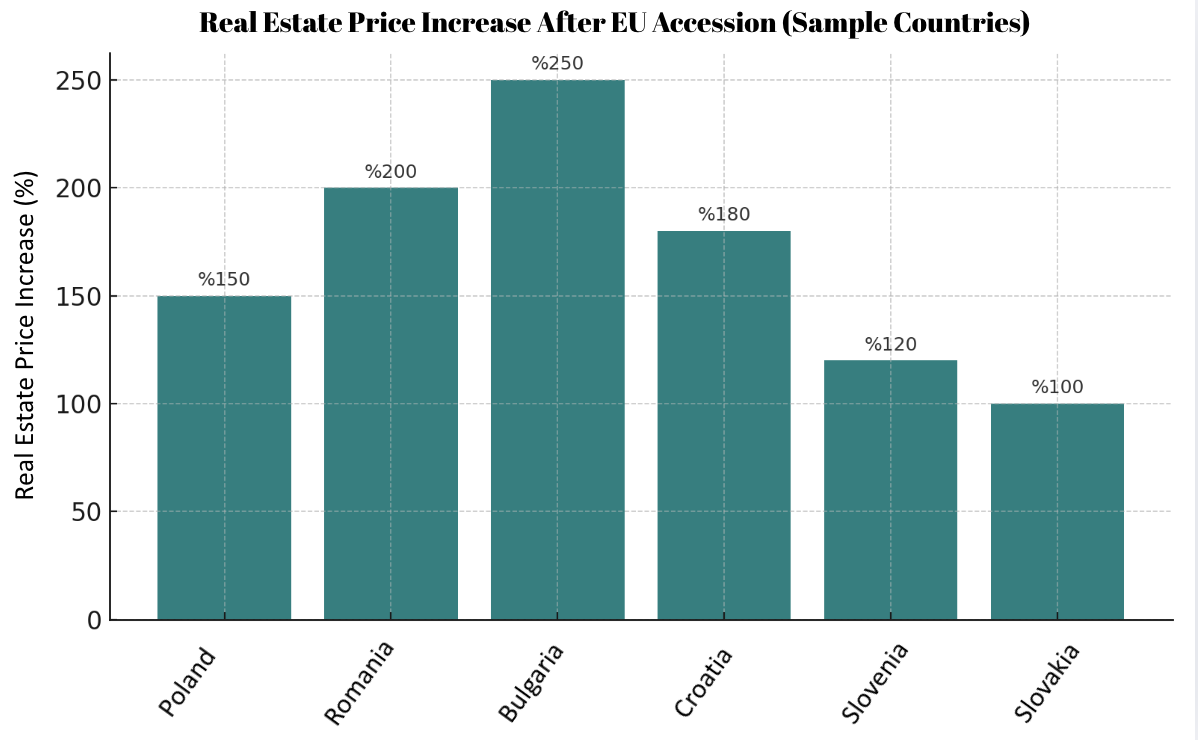⌂ MONTENEGRO REAL ESTATE AND THE EU MEMBERSHIP PROCESS
The Adriatic country Montenegro has come onto the radar of international investors in recent years due to counting down the days to its European Union (EU) membership. In the last 3 years, Russia in particular acted early and stood out in investments directed to the region, but countries such as Switzerland, Germany, Austria, Turkey, and the United Kingdom have also intensified their investments.Real estate prices, which have captured an average annual growth trend of 10%, are expected to continue this rise until the EU membership process is completed.
MONTENEGRO’S EU MEMBERSHIP PROCESS
- 2008: Application for EU membership
- 2010: Candidate country status, 7 reform criteria determined
- 2012: Accession negotiations began
- 2024: Positive assessment for Chapters 23–24; Chapters 7, 10, 20 temporarily closed
- 2025: Chapter 5 (Public Procurement) temporarily closed; in total 7 chapters closed
REGIONAL CONTEXT
Montenegro is the candidate country at the most advanced stage in negotiations in the Western Balkans. While Albania, North Macedonia, Serbia, and Bosnia and Herzegovina are progressing more slowly in the process, the 2025 Kotor Summit has been a critical turning point for accelerating regional reforms and creating a common market.INFORMATION NOTE: EU MEMBERSHIP AND THE REAL ESTATE MARKET
In countries that later joined the EU (Poland, Romania, Bulgaria, Croatia, Slovenia, Slovakia), property prices increased between 100%–250%.Based on these examples, Montenegro’s real estate prices are also expected to at least double after EU membership.

